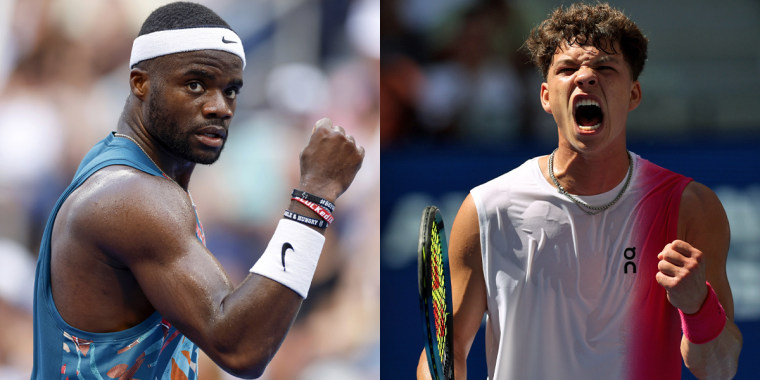Frances Tiafoe and Ben Shelton will face off at the U.S. Open quarterfinals Tuesday, marking the first time in 15 years that two Black American men will play in Arthur Ashe Stadium.
The world's largest tennis venue is named after the barrier-breaking player who reached the No. 1 rank in the world and became the first Black man to win the U.S. Open, Wimbledon and the Australian Open before retiring in 1980.
“Two people of color playing in the quarterfinals, huge match on Arthur Ashe — it’s a pretty monumental moment,” Tiafoe told reporters ahead of the match.
The moment is certainly not lost on Tiafoe, who a year ago made history as the first Black American man to reach the U.S. Open semifinals since Ashe in 1972.
On the women’s side, Coco Gauff and Madison Keys have also made it through, bringing the total number of American players of color in the single's quarterfinals to four.
Tiafoe, in particular, has emerged as a flag bearer for the American fans, beloved for his extraordinary skills but also his charismatic personality and larger-than-life showmanship on the court.
The last time two Black American men faced off in Arthur Ashe Stadium was in 2008, when James Blake played Donald Young during the tournament's first round.
“To see a match like this, and think, ‘Okay, this is the second time it’s happened... but hopefully there’s plenty more to come,’” said Blake.
Blake said his path was made easier by 1996 Wimbledon finalist MaliVai Washington and sees himself as one in a long line of “steppingstones” for Black American players — from the earliest pioneers Ashe and Althea Gibson, whose statue sits on the Flushing grounds, through the Williams sisters and beyond.
“Everyone’s experience is a little different, but I think every one of us would be willing to acknowledge that it’s become easier because of Arthur and Althea,” said Blake.
“We all think about those things. It just sometimes takes a moment like this to reflect.”
Blake applauded the current generation, including women’s star Gauff, for rising above the “hatred out there.”
